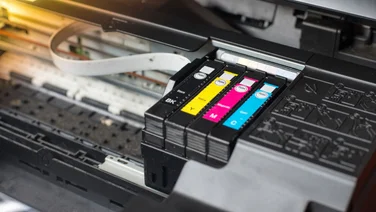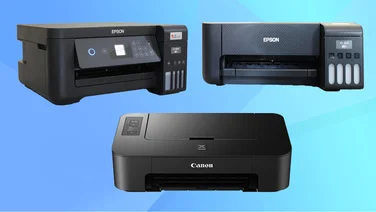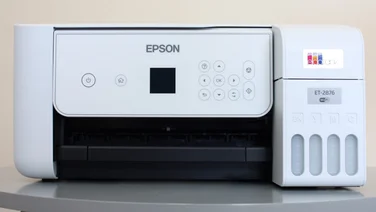To help us provide you with free impartial advice, we may earn a commission if you buy through links on our site. Learn more
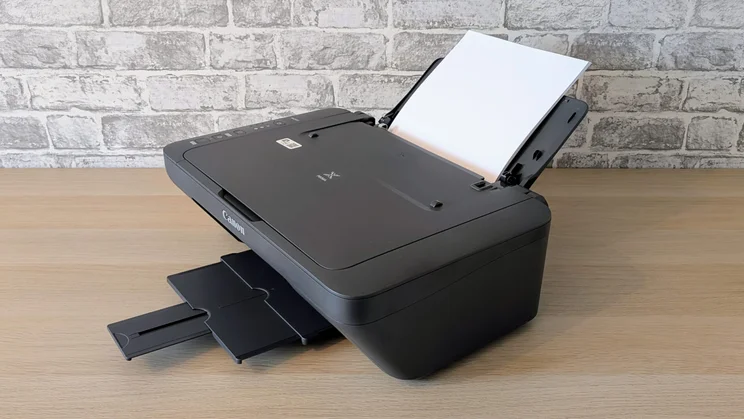
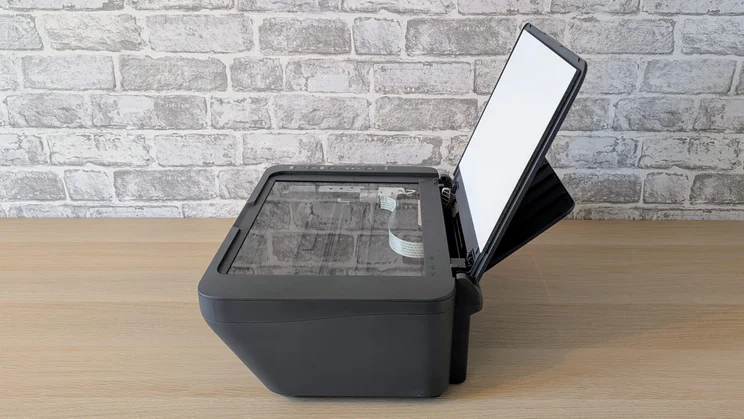
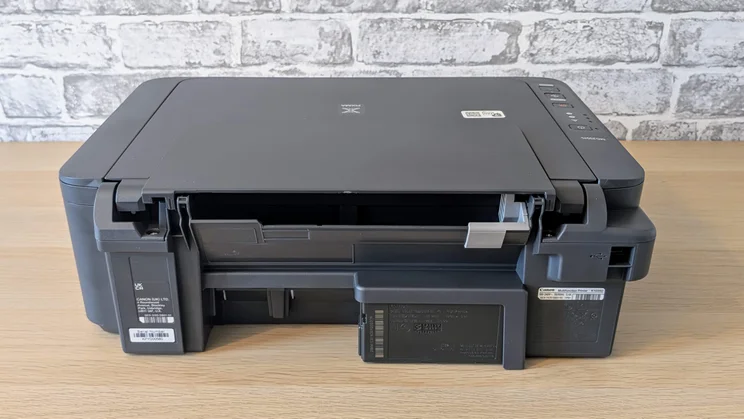

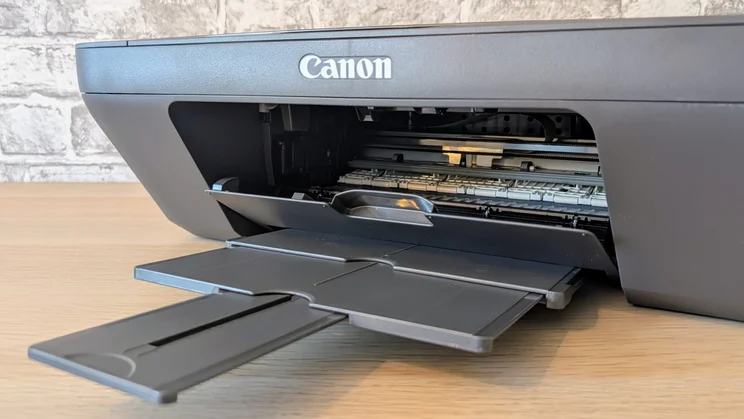
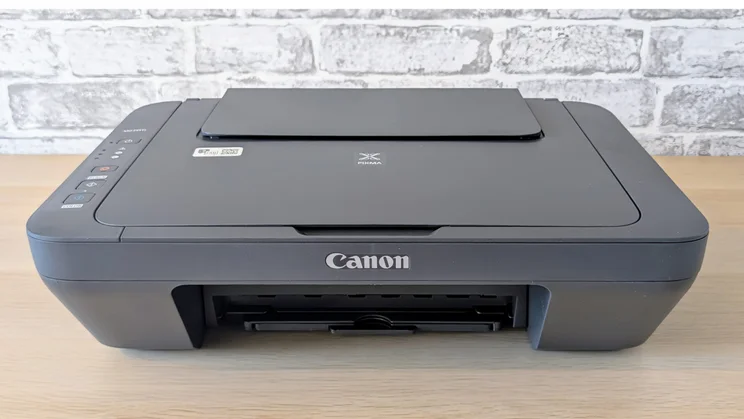
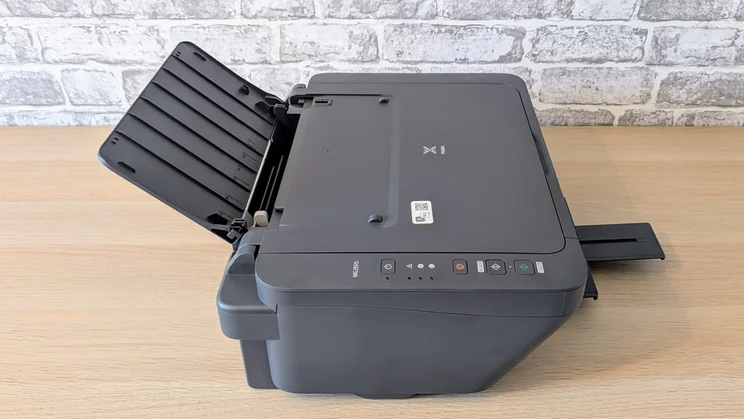
- About as cheap as printers get
- Looks and build quality belie price
- Reasonable running costs
- USB-only connectivity
- Mediocre standard print quality
It’s a standing joke that buying a new printer is often cheaper than buying new ink cartridges for an existing printer, but in the case of the Canon Pixma MG2551S, it’s quite literally true. You can pick up one of these budget printers for between £35 and £45 with two full capacity ink cartridges included in the box, which alone would cost almost £30 on their own. In effect, then, you are getting a printer for a tenner or less.
For that price, you will naturally have to forgo some of the refinements that come with more pricey models, and the main one is wireless connectivity. To make it quite clear (the presence of the “Frequently returned due to compatibility issues and poor connectivity” alert on Amazon’s selling page suggests it does need to be made clear) this printer will only work when connected to a laptop or desktop PC via a USB cable.
What do you get for the money?
You don’t get an awful lot for your money, but that’s not surprising given how cheap it is. The Canon Pixma MG2551S has no wireless connectivity, no automatic duplex printing — so if you want to print two-sided, you’ll need to manually flip the paper over and refeed it — and there’s no screen so you can’t change settings on the printer itself. Canon doesn’t even include a USB cable.
What you do get is a basic, old-school home multifunction printer with a rear-feed paper slot, a rather wobbly three-section output tray at the front and a 600 x 1,200ppi scanner on top. It’s quite a big old Hector – significantly taller than the HP Envy 6120e I looked at recently – but it feels and looks more upmarket than the price tag would suggest.







Granted, it’s made almost entirely of plastic, but it feels much less flimsy than some other budget printers, and thanks to the dark grey paint finish it looks rather smart and doesn’t show-up dirt or greasy fingerprints.
Controls are minimal. To the left of the scanner deck, you’ll find a power button, three warning lights – one error warning, one for low black ink, one for low colour ink – a stop button, mono and colour copy buttons … and that’s it. Of course, it could be argued that that is all you need.
Finally, I was happy to find that the Pixma MG2551S comes bundled with two full-sized ink cartridges, not the half-capacity retail box affairs some other manufacturers palm off on new customers.
How easy is it to set up?
Given the warning on the Amazon selling page, I tried setting the Pixma MG2551S up with as many devices as I had to hand.
Canon bundles an optical disc (I told you it was old school) with the Windows software on it that you need to get going, including drivers and a selection of utilities grouped in a desktop quick menu. These let you monitor ink levels, play with image files, access the printer’s settings and so forth. If you lack a disc drive (most people these days), the software package is available for download online.
You have the option of just installing the drivers, which are essential – without them Windows will not recognise the printer – but I’d recommend also installing the My Printer control panel so you can access the print quality settings.







Turning to Linux Ubuntu 24.10, all the basic functions worked once I’d installed the CUPS Common Print Dialogue Backend, which is not an uncommon requirement of getting your printer to talk to Tux.
Without a MacBook to hand, I couldn’t test the Pixma with macOS, but given that Canon offers a Mac application called Canon PRINT, it’s fair to assume it will work as well as it does on Windows.
Canon makes no claims about connectivity beyond Windows and MacOS, but in the interests of science, I tried with some other kit in the office. The Pixma refused to play ball with my Chromebook, which, given that the Canon MG2000-series is not listed by Google or Canon as Chromebook-friendly, didn’t come as a massive shock. The same proved to be the case when I connected a Google Pixel Pro 9 XL to the MG2551S with a USB OTG cable. Again, that’s hardly surprising.







One thing you will need to do before you use the printer with anything is make sure you have a USB-B 2.0 cable to connect the printer. Canon doesn’t bundle a cable, which strikes me as rather parsimonious, even at £35. I had to hop onto Amazon and buy a cable for £4.99 before I could commence this test.
Removing and replacing ink cartridges is, fortunately, straightforward, once you flip down the cover that sits behind the paper output tray. The cartridges click easily into place with no sense that something might go snap or jam as you push them in.
What about running costs?
With none of the rather complex restrictions that come with HP’s Instant Ink service, you are free to use Canon or anyone else’s ink in the MG2551S, as long as the cartridge design is compatible with Canon’s PG-545 (black) and CL-546 (colour) standard. Canon does run a subscription ink service called Pixma Print Plan, but the MG2551S isn’t eligible.
If you buy direct from Canon, then high yield colour and black ink cartridges will cost £25 each and should be good for 300 and 400 pages respectively. That works out at 8.5p and 6.4p per page, respectively, which is fair value.







Looking around some of the more reliable third-party ink sellers, I found a high-yield colour and black twin pack for £36, both cartridges holding 2ml more ink than the Canon equivalent. That should equate to a cost per page of around 4.5p per page for black and 6p per page for colour.
Running a printer is not going to jack up your electricity usage like charging a Tesla, but the MG2551S was surprisingly stingy with juice, drawing just 7.2W when printing. That makes it one of the most efficient home printers we’ve tested.
What are speed and print quality like?
Being a super-cheap printer, the Pixma MG2551S needs to be forgiven for going about its business at a rather unimpressive clip. It took 14.8 seconds to print the first black and white page before settling down to a steady 8.1ppm and 43 seconds to print a full-colour A4 photographic image in standard quality. Two A4 pages of mixed text, images and graphics took 1min 24secs.
That’s on the slower side of things, even when compared to the less-than-speedy HP Envy 6120e. It should be noted, though, that the black and white speed was on the nose with Canon’s claim of 8ppm, even if the colour speed of 1.6ppm was slower than its claim of 4ppm.
Those speeds don’t make the MG2551S some sort of inkjet Usain Bolt, but they are not an order of magnitude worse than most sub-£100 inkjet printers. Helpfully, the Pixma doesn’t make much noise as it goes about its business; it just chugs along at an acceptably low volume with little vibration.







Image print quality can best be described as decent. Compared to the originals, our full-page test photo images came out looking a little colourless and over-exposed when printed in Standard quality mode, even on the glossy photographic paper that Canon sent me with the printer. There was also some faint banding visible when printing colour images in Standard quality modes.
These problems vanished when the print quality was set to Photo and High, but in those settings, the printer won’t print photographs full page and would only play ball when the size was dropped to 6 x 4in or 5 x 7in. Printing a 6 x 4in photograph in Photo and High quality modes took 97 seconds. We experienced similar issues with the Canon Pixma TS3450.
When it comes to printing text, there is some feathering to be noticed around the edge of characters in Standard quality mode, so the printed copy lacked that final, absolute degree of crispness and clarity. That said, even small text was still perfectly legible. Putting the printer into High quality mode improved matters no end, but again it was slow in this mode, dropping from 14 seconds to 28 seconds to print a single page.







Overall, this cheap Canon doesn’t give that much away to more expensive, but still budget, inkjet printers, and if you are prepared to sacrifice the ink and time needed to run in High Quality mode, its quality is very good. At the price, I’m prepared to forgive the Pixma MG2551S its various foibles.
The optical scanner can capture images at 600 x 1,200ppi and does so pretty faithfully with on-screen scans of several of my Toyah 7in singles looking just a tad brighter than the originals, but not in a bad way. The scanner lid has about 5mm of vertical lift built into the hinge so it can lie fully flat over thin books, magazines and such like.
Should you buy the Canon Pixma MG2551S?
Assuming you don’t need the versatility and convenience of wireless printing, aren’t too concerned about printing quickly and don’t need to print from a Chromebook or mobile device, then it’s hard to argue with the print and scan quality the Canon Pixma MG2551S delivers. The two standard capacity ink cartridges that you get in the box are just a bonus.
For printing infrequent domestic jobs such as boarding passes and tickets, or scanning the occasional document, the Pixma MG2551S recommends itself. For £35, you really can’t go wrong.




